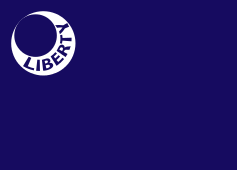William Moultrie
| William Moultrie | |
|---|---|
 | |
| 35th Governor of South Carolina | |
|
In office February 11, 1785 – February 20, 1787 | |
| Lieutenant | Charles Drayton |
| Preceded by | Benjamin Guerard |
| Succeeded by | Thomas Pinckney |
|
In office December 5, 1792 – December 17, 1794 | |
| Lieutenant | James Ladson |
| Preceded by | Charles Pinckney |
| Succeeded by | Arnoldus Vanderhorst |
| 10th Lieutenant Governor of South Carolina | |
|
In office February 16, 1784 – February 11, 1785 | |
| Governor | Benjamin Guerard |
| Preceded by | Richard Beresford |
| Succeeded by | Charles Drayton |
| Personal details | |
| Born |
November 23, 1730 Charleston, South Carolina |
| Died |
September 27, 1805 (aged 74) Charleston, South Carolina |
| Religion | Anglican/Episcopal |
| Military service | |
| Allegiance |
|
| Service/branch |
|
| Years of service |
1761 1775 – 1783 |
| Rank | Major General |
| Unit | 2nd South Carolina Regiment |
| Battles/wars |
Anglo-Cherokee War American Revolutionary War *Battle of Sullivan's Island *Siege of Savannah *Siege of Charleston |
William Moultrie (/ˈmuːltriː/; November 23, 1730 – September 27, 1805) was a planter and politician who became a general from South Carolina in the American Revolutionary War. As colonel leading a state militia, in 1776 he prevented the British from taking Charleston, and Fort Moultrie was named in his honor.
After independence, he advanced as a politician; Moultrie was elected by the legislature twice over a period of years as Governor of South Carolina (1785–87, 1792–94), serving two terms. (The state constitution kept power in the hands of the legislature and prohibited governors' serving two terms in succession.)
Life
Moultrie was born in Charleston, South Carolina. His parents were Dr. John and Lucretia (Cooper) Moultrie, and he was educated as a planter.
He fought in the Anglo-Cherokee War (1761). He was elected to the colonial assembly representing St. Helena Parish before the advent of the American Revolution.[1]
In 1775 Moultrie was commissioned colonel of the 2nd South Carolina Regiment, in the state militia. In December of that year he led a raid on an encampment of runaway slaves on Sullivan's Island, killing 50 and capturing the rest. The island served as the main landing point for African slaves imported to Charleston; an estimated 40% of the total estimated 400,000 Africans brought to the United States as slaves landed here.
In 1776 Moultrie's defense of a small fort on Sullivan's Island (later named Fort Moultrie in his honor) prevented Sir Henry Clinton and Sir Peter Parker from taking Charleston. The Continental Congress passed a resolution thanking Moultrie. He was promoted to brigadier general and his regiment was taken into the Continental Army.
Moultrie's skill failed to prevent the fall of Savannah, Georgia to the British in 1778, and they occupied it for the remainder of the war. He was captured in the fall of Charleston to the British in 1780, and they occupied the city until the end of the war. Thousands of slaves in the South escaped to join British lines in the city and elsewhere, as the Crown had promised them freedom if they left rebels. When the British evacuated from Charleston, they also took many freedmen, resettling them in their colonies in the Caribbean and Nova Scotia, where they were known as Black Loyalists.
Moultrie was exchanged for British prisoners. In the last year of the war, he was promoted to major general in 1782, the last man appointed by Congress to that rank.
After the war he was elected by the new state legislature as 35th Governor of South Carolina (1785–87). The state constitution prohibited men from serving two successive terms as governor, an effort to keep power in the hands of the legislature. Moultrie was re-elected by the legislature in 1792, serving into 1794.
In his later years, he returned to manage his plantation. He wrote Memoirs of the Revolution as far as it Related to the States of North and South Carolina (1802).

Legacy
After the war, the fort he had defended was renamed Fort Moultrie in his honor. It operated as a pivotal defense point until supplanted by Fort Sumter. Fort Moultrie was used as an active post of the United States Army from 1798 until the end of World War Two.
The Moultrie Flag
During his notable defense of the fort in 1776, a flag of Moultrie's own design was flown: a field of blue bearing a white crescent with the word LIBERTY on it. The flag was shot down during the fight. Sergeant William Jasper held it up to rally the troops, and the story became widely known. The flag became an icon of the Revolution in the South. It was called the Moultrie, or the Liberty Flag. The new state of South Carolina incorporated its design into its state flag.
Moultrie, GA
Ochlockoney, GA was renamed Moultrie, GA when it was incorporated by the Georgia General Assembly in 1859.[2]

References
- ↑ Fort Moultrie Centennial, Part I. Charleston, SC: Walker, Evans & Cogswell. 1876. p. 8. Retrieved 25 September 2014.
- ↑ Hellmann, Paul T. (2006-02-14). Historical Gazetteer of the United States. Routledge. ISBN 1135948593.
Further reading
- Bragg, C.L. Crescent Moon Over Carolina: William Moultrie and American Liberty (University of South Carolina Press; 2013) 336 pages
External links
- SCIway Biography of William Moultrie
- http://www.nga.org/cms/home/governors/past-governors-bios/page_south_carolina/col2-content/main-content-list/title_moultrie_william.html
-
 Chisholm, Hugh, ed. (1911). "Moultrie, William". Encyclopædia Britannica (11th ed.). Cambridge University Press.
Chisholm, Hugh, ed. (1911). "Moultrie, William". Encyclopædia Britannica (11th ed.). Cambridge University Press.
| Political offices | ||
|---|---|---|
| Preceded by Richard Beresford |
Lieutenant Governor of South Carolina 1784–1785 |
Succeeded by Charles Drayton |
| Preceded by Benjamin Guerard |
Governor of South Carolina 1785–1787 |
Succeeded by Thomas Pinckney |
| Preceded by Charles Pinckney |
Governor of South Carolina 1792–1794 |
Succeeded by Arnoldus Vanderhorst |
